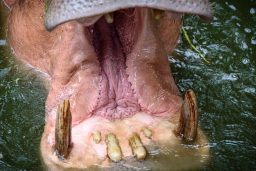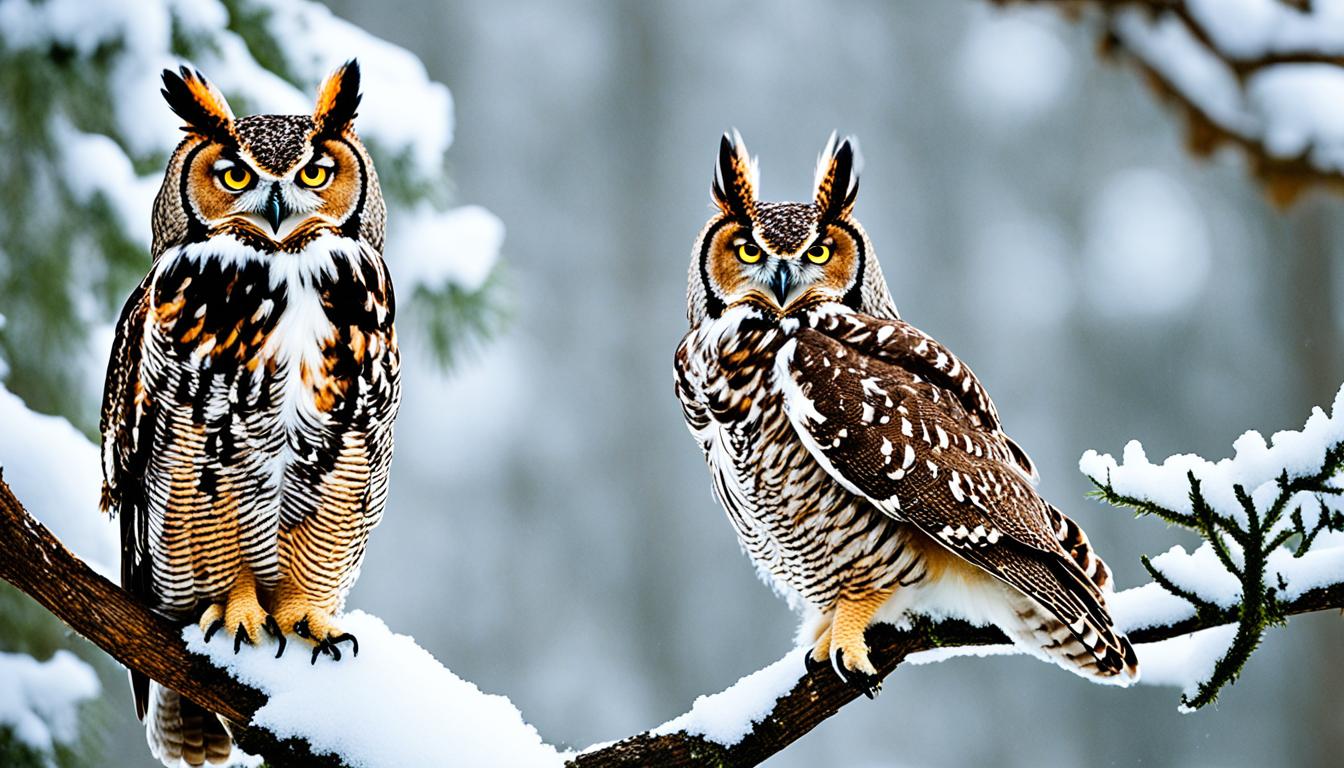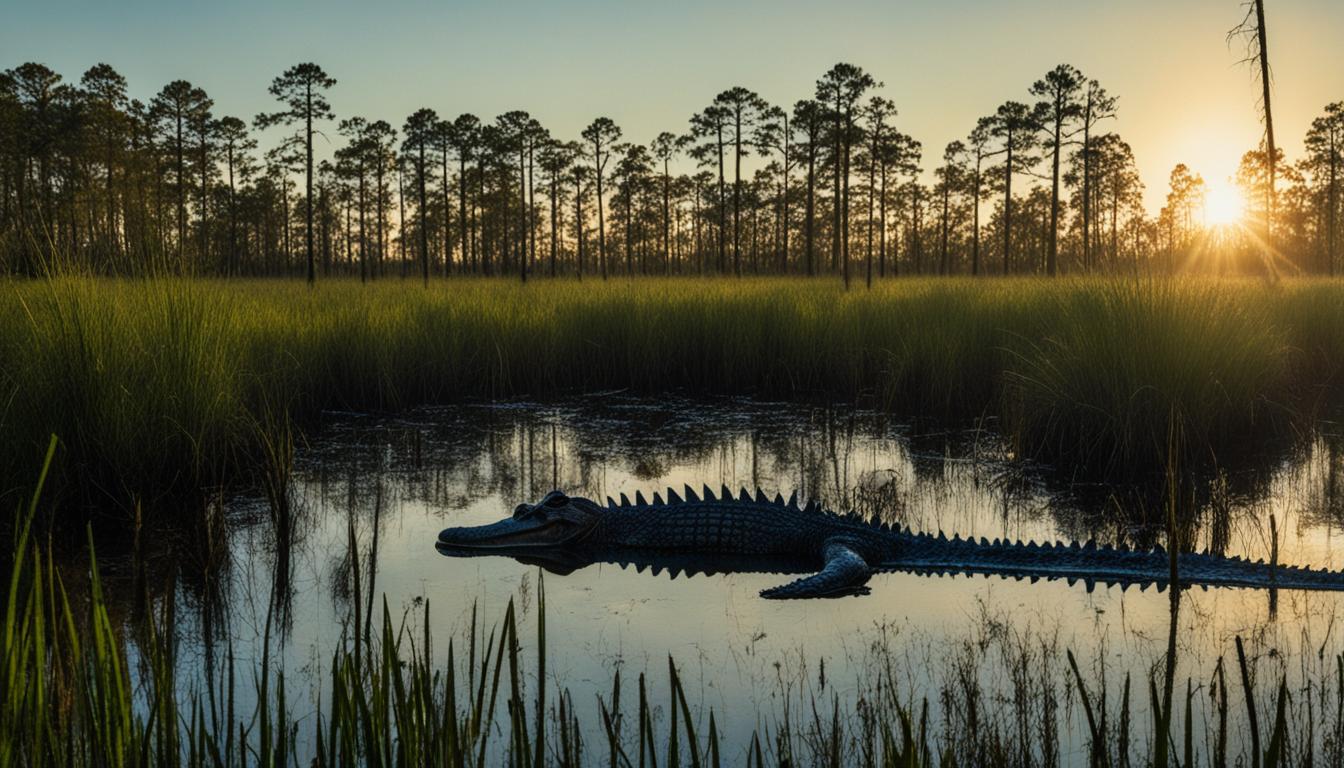If you’re biological – hippos have teeth: 8 giant 1ft-long teeth. However, if you define tusks as art (something beautifully carved) then hippos have tusks.
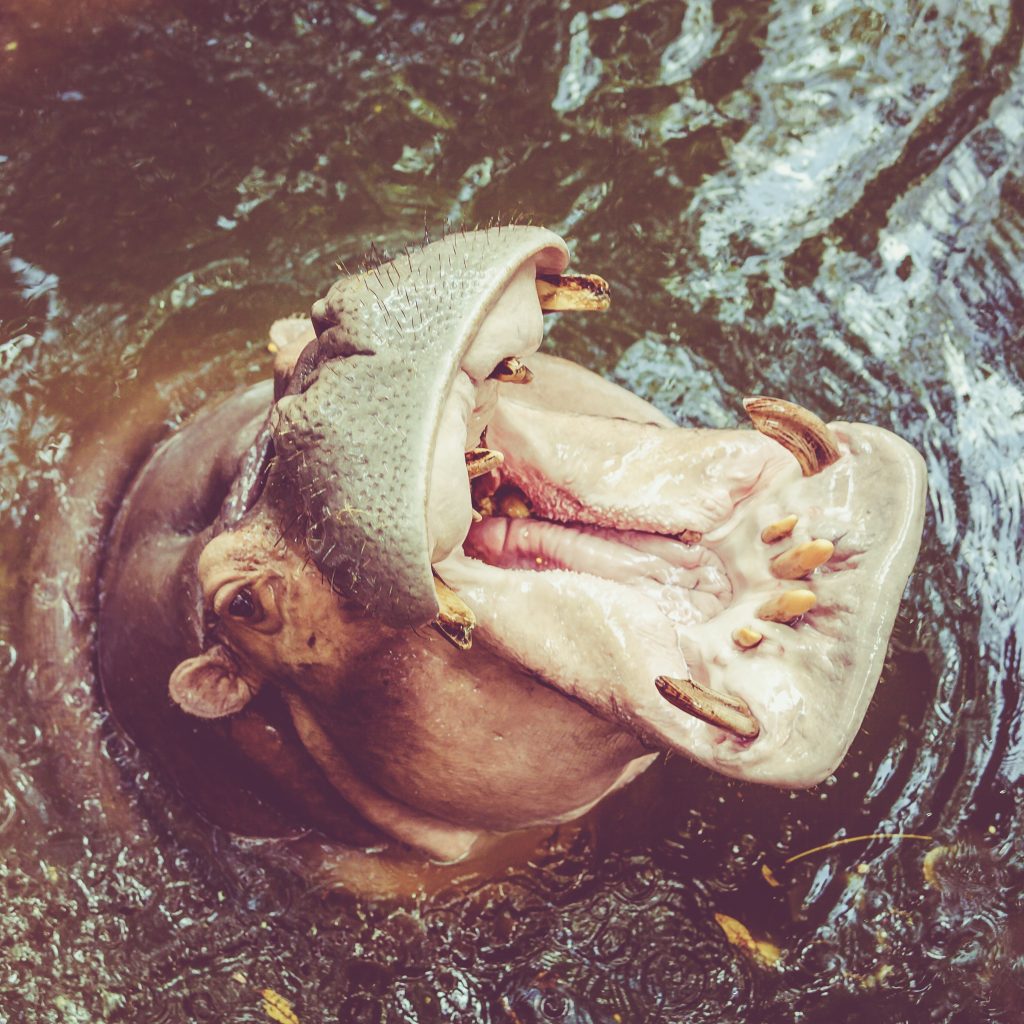
Do Hippos Have Tusks – And How Many?
If we are assuming that any giant white protrusions sticking out of an animal’s jaw – are tusks – then hippos win hands down as the animal with the most tusks. By far.
Common, or River Hippos (Hippopotamus amphibius) live all across sub-Saharan Africa – and have a lot of big teeth. Four of which are massive. On the bottom jaw – these consist of two giant incisors – over a foot long each from root to tip; and two humongous canines – reaching nearly two feet long each. Twice as long each as a saber-toothed tiger’s fangs.
That is nearly 8 feet of tusks. In one mouth.
Technically though, a tusk is any tooth that is visible out of the mouth of an animal when the mouth is closed – which of course isn’t the case with hippos. A hippo has a giant head and so these massive teeth all stay within the closed mouth – all the better for staying underwater with.
However, an art form called ‘ivory carving’ can be done with ANY tooth from ANY animal. After all, a tusk is actually just an oversized tooth used for display or fighting (rather than a fang for feeding or killing other animals). So any tooth large enough to be carved can be called a tusk. And unfortunately, with their mouthful of giant teeth/tusks, hippos are regularly killed (illegally) because of them. One of the main drivers of their ‘vulnerable’ IUCN Red List status.
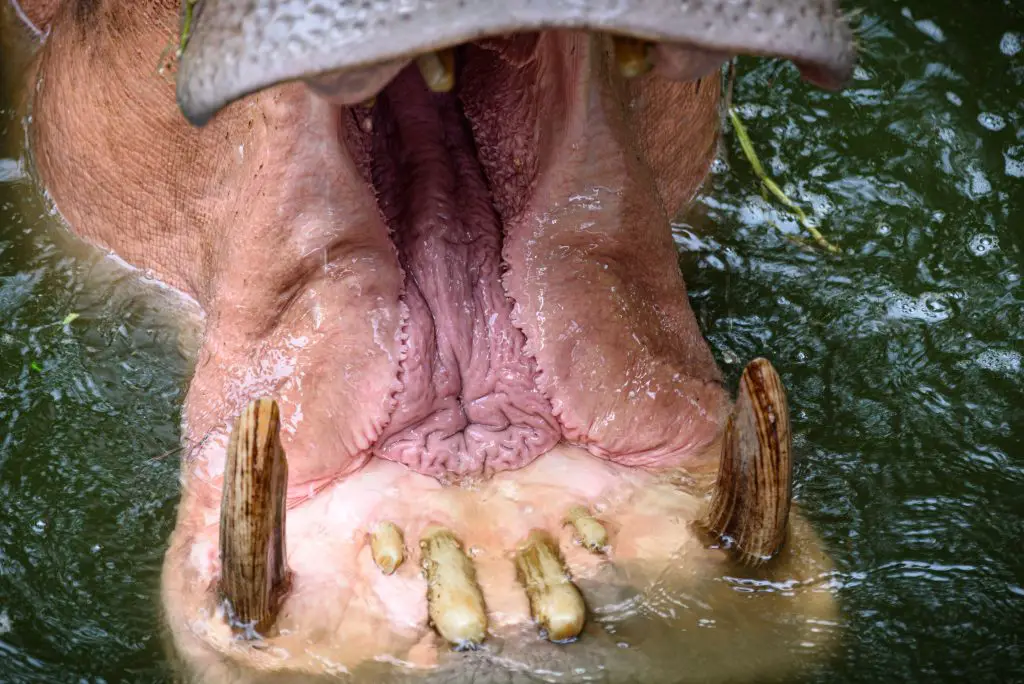
How Many Teeth Does A Hippo Have?
As with all mammals – hippos have different types of teeth to do different things. Their incisors and canines are for display and fighting (and they can inflict some serious wounds on each other in battle).
But they also have molars and premolars at the back for all their chewing. Hippos can munch through over 60kg of food a night on their dry-land expeditions – and need these strong chewing teeth to process it all.
These molars are in great numbers too; with 3 molars and 3 premolars on each side and jaw – totaling 24 chewing teeth. These are worn down depending on what the hippo eats or can be broken in battles with other hippos.
The two bottom incisors take the brunt of the fighting – with these two long spear-like tusks – jutting out to the front of the mouth. They are constantly growing too – so can bounce back from any breakages. The other two bottom and all four top incisors aren’t so big but are still visible when the hippos do their world-famous super-wide yawn (which is actually a threat posture).
As for those canines – well those two on the bottom inflict the most wounds as they are thick, curved, and very long. They are also super sharp. Due to the positioning of the upper canines, they rub together at an angle every time the hippo closes their mouth – sharpening both to an amazing leading edge. A weapon that never dulls.
So, in total – a hippo has 36 teeth: 8 incisors; 4 canines, 12 premolars and 12 molars.
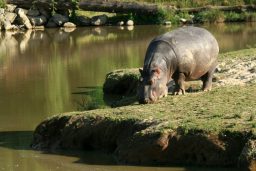
Is A Hippo A Carnivore Or A Herbivore?
Although a hippo has giant canine teeth – they don’t use them for feeding. These are purely for display and causing injury when needed.
Hippos are actually herbivores – living almost entirely on grass. They don’t eat anything in the water they love so much and spend all day relaxing in – they wait until the cool night is in full swing before leaving the safety of the water.
Hippos only stay in the water all day (over 16 hours each sitting) to stay cool under the endless sunshine. They have grown so big because the water spreads their weight – and this also makes them incredibly graceful and agile underwater.
At night, however, they stomp their way out – able to breach steep river banks and wander several miles a night in search of tasty grass. They will eat many kilos of food in each 5-hour feeding session before heading back to the water before sunrise. And most likely before they get too heavy to hold themselves up any longer!
What is the Difference Between Narwhal Tusks and Hippo Teeth?
The narwhal tusk composition and material differ significantly from hippo teeth. Narwhal tusks are actually elongated canine teeth that are typically made of dentin, a hard and dense material. In contrast, hippo teeth are primarily composed of enamel, a tough outer layer, and dentin beneath it. These variations in structure and material result in distinct properties and functions for these unique animal appendages.
Will A Hippo Attack A Human?
Although they are vegetarians – hippos are one of the most dangerous animals on the planet.
With their cantankerous attitude to most things – including Nile Crocodiles and nosy lions – you can’t trust a hippo not to attack. They are huge of course – so can crush and kill humans just by running into them. Around 500 people a year are killed by hippos – many more than are killed by bears and lions combined.
There have been reports, however, of hippos eating meat – but these are very rare cases. They are also usually discovered later to be due to ill health or extremely stressful situations. Not something that is commonplace or even needed. Hippos can’t digest animal tissue – so has no biological or survival advantage.
Thank goodness…

